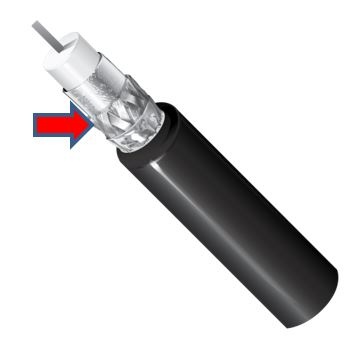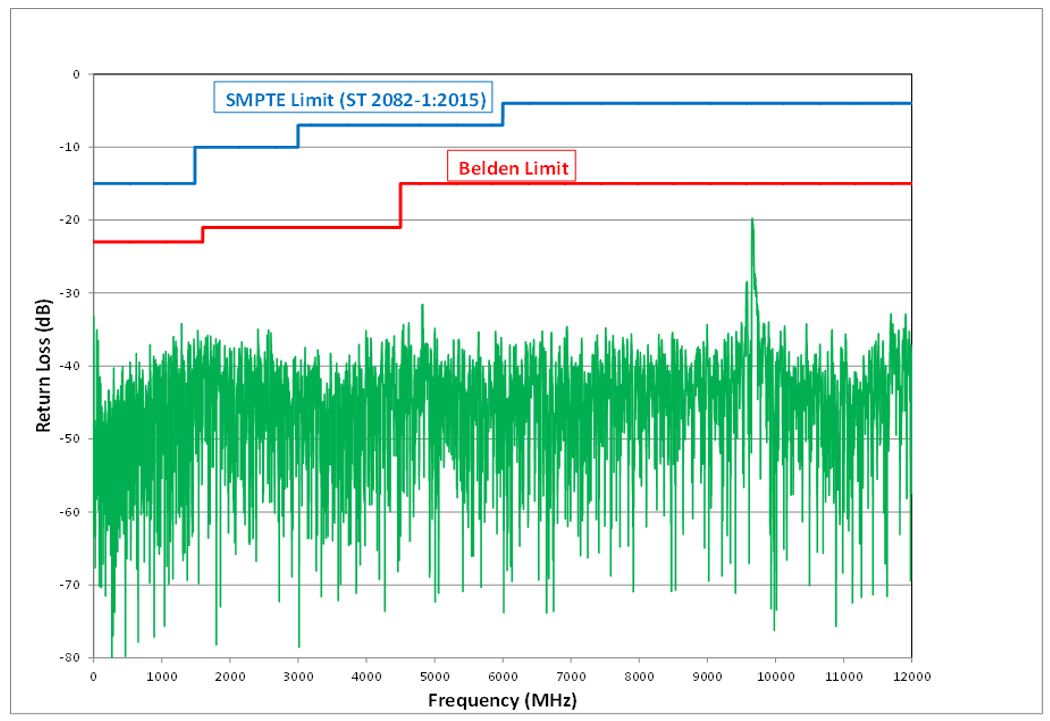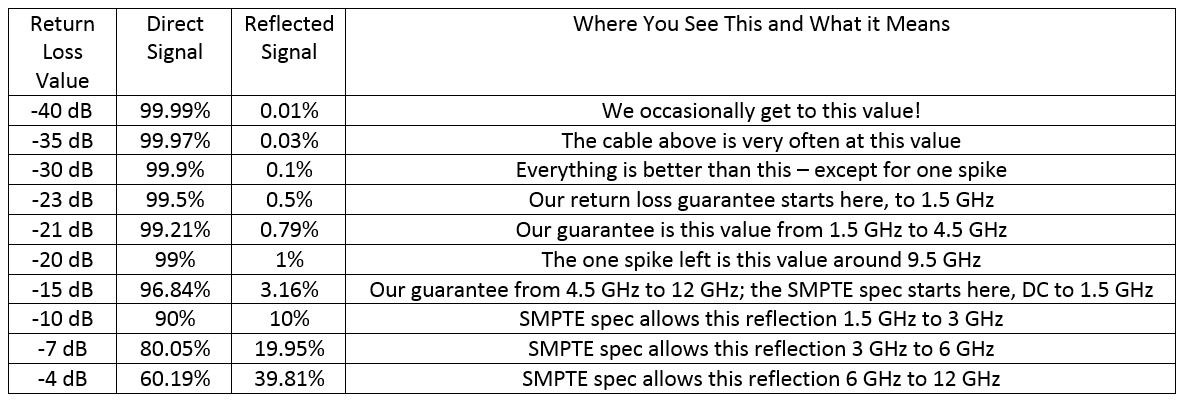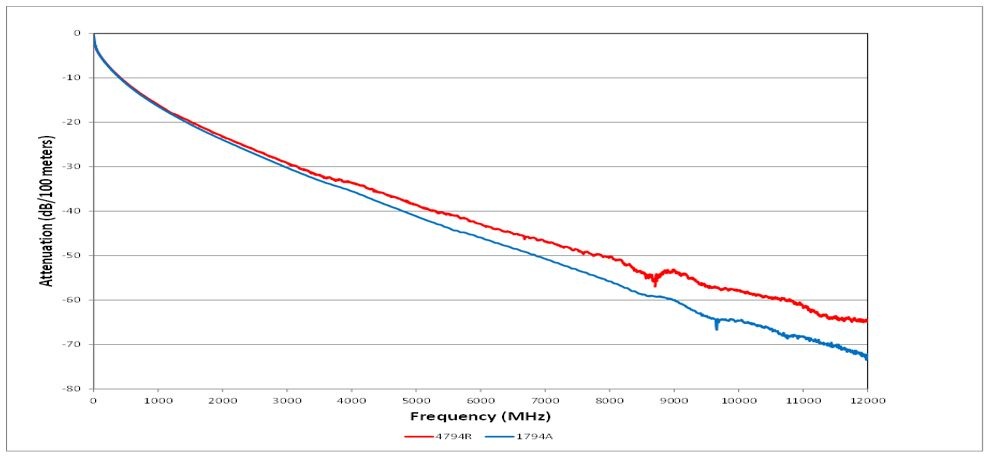Cable Braid Design: An Important Factor in New 4K Coax Cable
As we said in a previous blog, there’s a revolution happening with 4K coax cable design. We outlined factors that set new 4K coax cable design apart (silver-coated copper center conductors, the insulation, polyethylene types and foil shields bonded to the core). Then we ended our post by promising to tell you about the last remaining factor that sets new 4K coax cable designs apart from the others: the cable braid in 12 GHz 4K design.
Learn more about the most difficult part of the journey to a new 4K coax cable design …
Cable Braid Performance
After the first foil, which a braid layer with 95% coverage – the most coverage possible in a single cable braid. Improving cable braid performance is one of the most difficult aspects of creating a new 4K coax design.
If you look at the impedance of the cable (return loss), old designs have a bunch of spikes at different frequencies. These are caused by the dimensions of the braid, the relationship between the individual conductors, how the cable braids are woven with each other, the angle at which they cross each other (braid angle) and lots of other factors.
 These spikes were often at very high frequencies. Most HD cables stop at 3 GHz (or 4.5 GHz for 1080p/50-60). If the spikes were higher than those frequencies, then they didn’t matter. There was little or no signal way up there, so we just ignored them. But now, at 6 GHz or 12 GHz for 4K – and eventually 24 GHz or higher for 8K – we have signals where the spikes are. We can no longer ignore them.
These spikes were often at very high frequencies. Most HD cables stop at 3 GHz (or 4.5 GHz for 1080p/50-60). If the spikes were higher than those frequencies, then they didn’t matter. There was little or no signal way up there, so we just ignored them. But now, at 6 GHz or 12 GHz for 4K – and eventually 24 GHz or higher for 8K – we have signals where the spikes are. We can no longer ignore them.
The simplest way to deal with these spikes is to simply move them up in frequency. The problem with that: When we revisit this for 8K, those spikes will be there, bigger than ever, and much harder to deal with.
With these new designs, we can test cable braiding machines and mark them for the kind of cable they can run - some for 6 GHz, some for 12 GHz. Even these braiders, which are fairly ancient machines, are entering a new era of precision and quality.
High-Performance 4K Video Cable
Below is the resulting return-loss performance of one of Belden's first 4K cables. The green trace shows a typical cable impedance return loss out to 12 GHz. The red line above the green performance trace is a guarantee of return loss. No cable will be worse than those return loss values.
The blue line represents SMPTE-suggested limits for return loss. We’re down to one spike around 9.5 GHz, which is at -20 dB return loss (99% of the signal gets through and 1% gets reflected). The rest of the cable is between -30 dB and -40 dB return loss.

This table shows exactly what these values of return loss mean, how much signal gets through and how much is reflected back to the source.

The Advantages of Tri-Shield
Now, back to the new 4K coax cable design. Over the cable braid we just talked about is another foil. This foil-braid-foil is called a "tri-shield." Like the other foil, it is also bonded. In this case, it is bonded to the jacket. When you strip off the jacket, the first foil comes off with it. Most installers wouldn't even realize it's there. But this gives you high shield effectiveness - better than 120 dB of noise rejection.
This is especially effective for long cable runs. For smaller cables, we might go back to a single foil, bonded to the core and a braid over that. This is a little more flexible, and people expect flexibility from small cables. Also, small cables won't go as far, and they are often used in rack-to-rack wiring, so the possibility of noise and interference is again reduced. A tri-shield might not be so effective for these cables.
Belden’s Hard Work Pays Off
This graph shows the result of Belden’s hard work on its own new 4K coax cable, representing the signal attenuation of a new 4K design (red line) compared to the same size cable in its previous version (blue line).

At 12 GHz, our new cable design has 8 dB improved attenuation compared to the previous design. This improved attenuation is due to the silver-coated copper center conductor and improved polyethylene dielectric, which we referenced in our first blog.
